Visiting the Sultan’s Seat
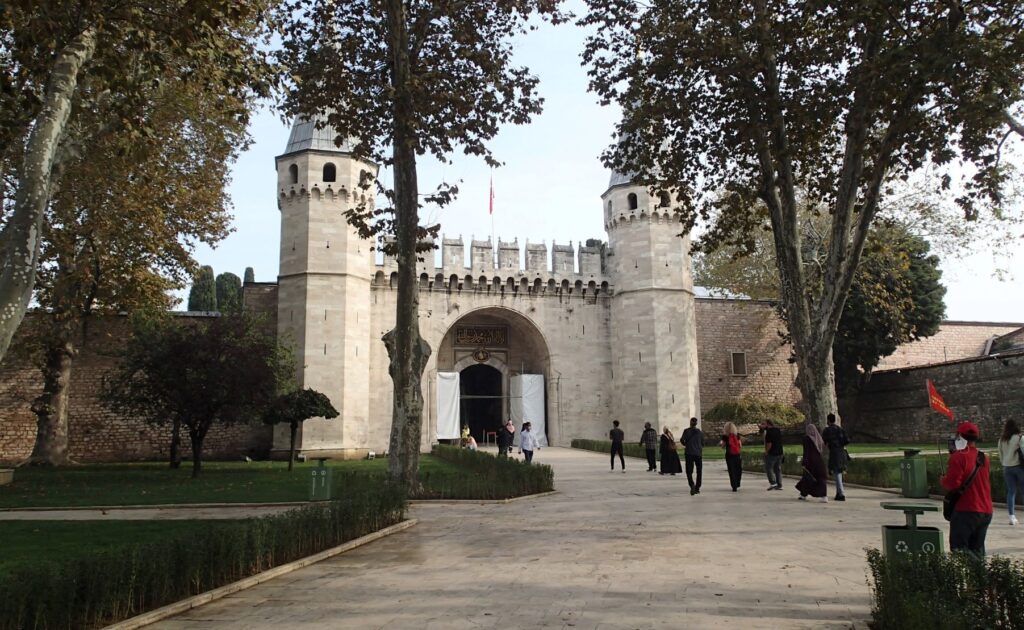
After a public holiday closure thwarted my previous attempt to visit, I took a day off from boat preparations and headed back to the Topkapi Palace. I’m getting familiar with the Istanbul rail network, and managed to get to the Old City precinct without too much trouble. Save for the fact that the Turkish automated ticketing ‘top up’ system accepts only cash, and constantly rejects notes that are not crisp and creaseless. After having my fifty lira bill rejected multiple times I gave up and, waiting until the security guard’s back was turned, snuck through the fare gate behind another commuter.
Topkapi Palace was the residence of the Sultan during the Ottoman Empire, which lasted more than 600 years and reached its peak in the 15th and 16th centuries. This handy model shows the Old City walls, and the Palace sitting within.
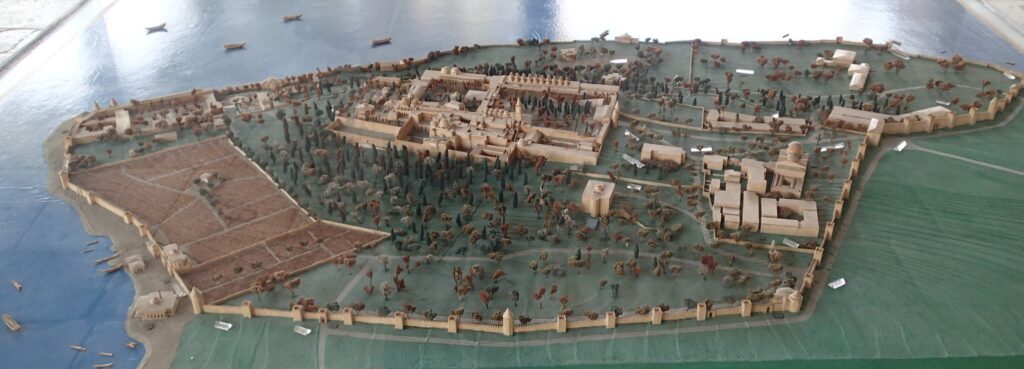
The Palace is divided into four courtyards, all containing numerous buildings ranging from the ceremonial to the domestic. The architecture is impressive to say the least, and buildings were added over the centuries as successive Sultans tried to out-magnificent each other.
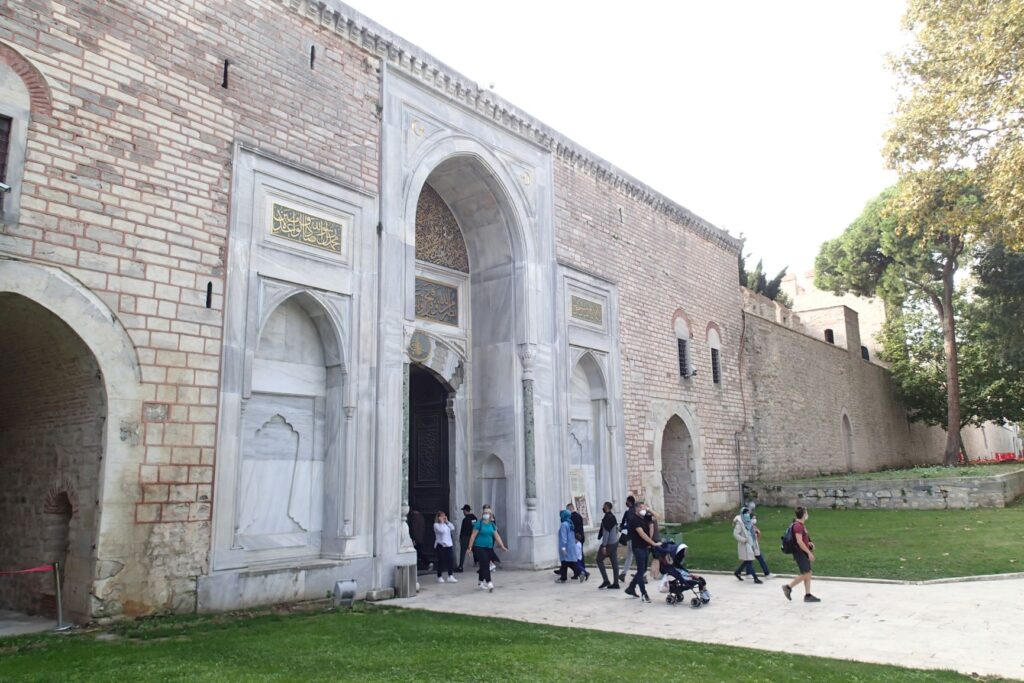
Other structures within the precinct are a little more curious, such as this ‘Target Column’. This particular column ‘was erected to commemorate (Sultan) Selim III’s shooting of a jug at the target 898m away using a rifle’.
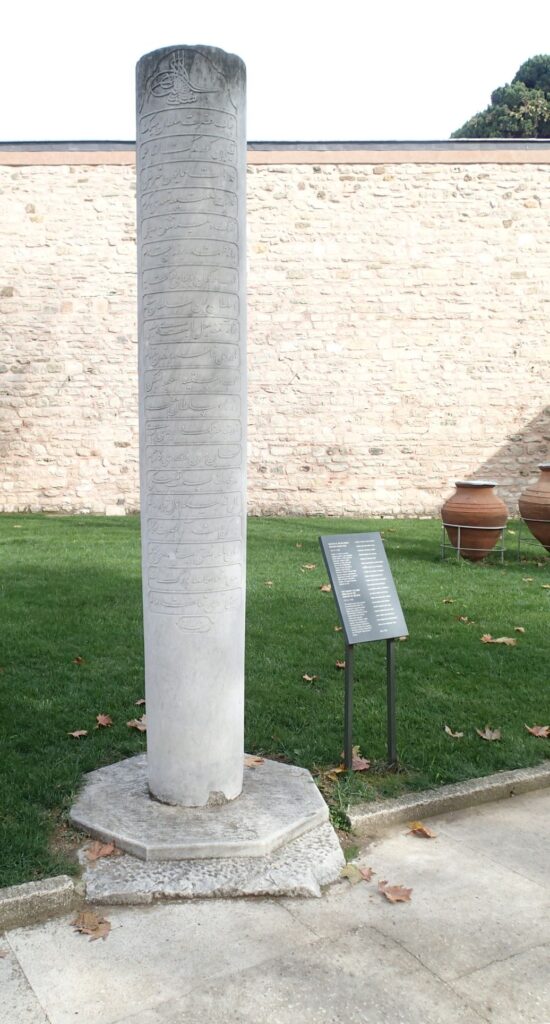
Considering the rudimentary nature of firearms during the 1700s when Selim was taking pot-shots at jugs, this claim of remarkable marksmanship has a bit of a Kim Jong Il feel about it. So does the fact that the column has an inscription of a poem ‘relating the dexterity of Selim III’s shooting’:
‘Sultan Selim had an aim that was true; And performed many feats of brave derring-do; He never would miss; And made his enemies piss; Pray he never points a rifle at you’

The Palace and surrounds are popular with both locals and tourists alike, and on the Sunday I visited was bustling with visitors. I imagine during the pre-Corona times it must be bedlam during peak season. A large section of the Palace and enclosed parklands are free to enter, as was the case during the days of the Empire. A ticket is required to enter the northernmost part of the Palace complex, which now houses a museum.
Each of the large courtyards is linked by an impressive gate. The Gate of Felicity was built in the 15th century, and was controlled by the mysteriously named Chief of the Gate of Felicity.
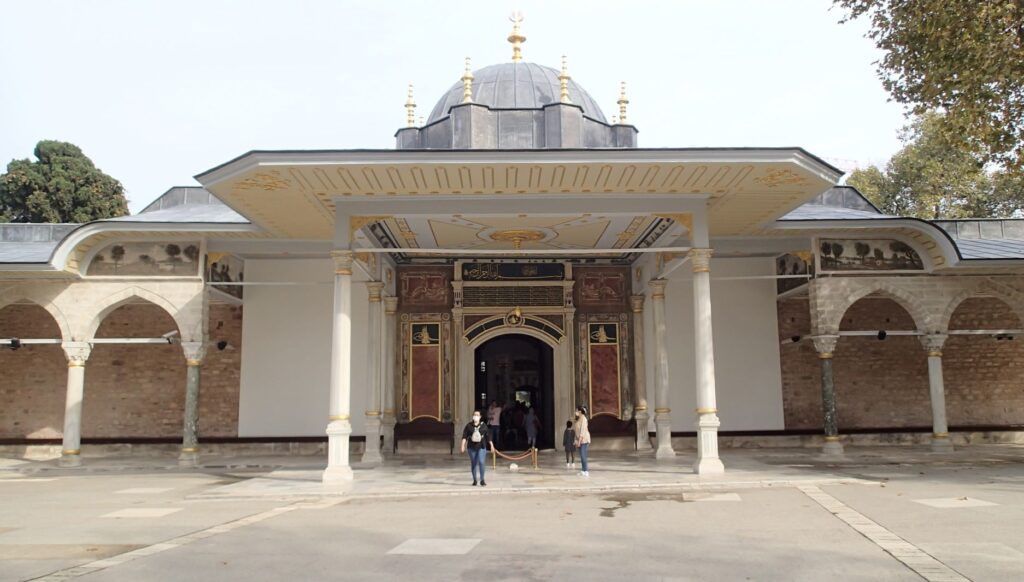
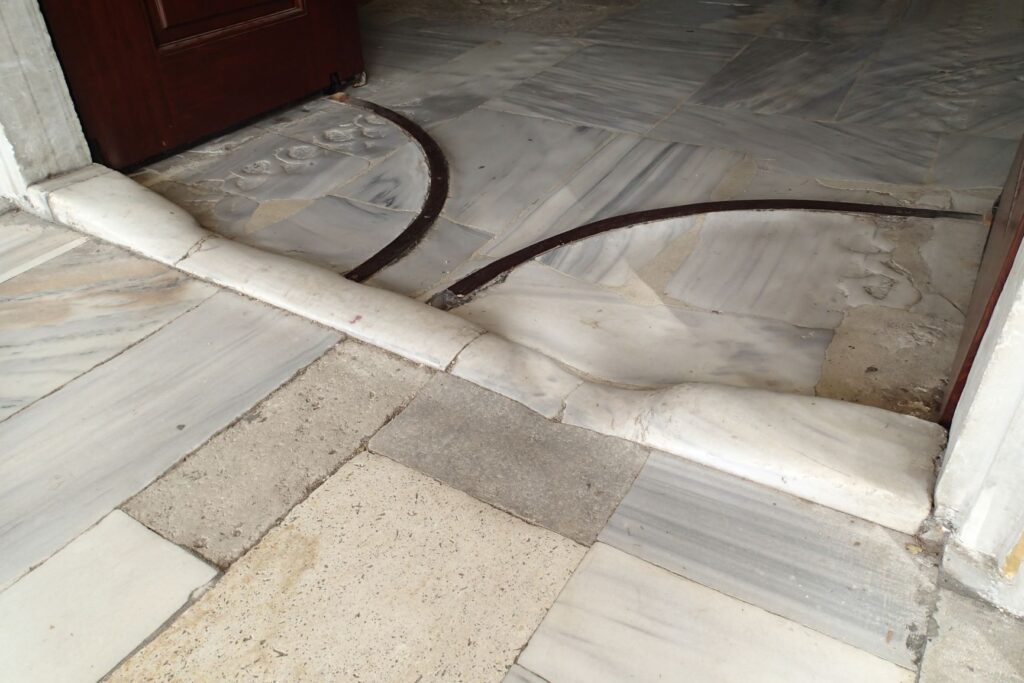
Sultan Ahmed was a promoter of learning, and commissioned this impressive building to store precious books.
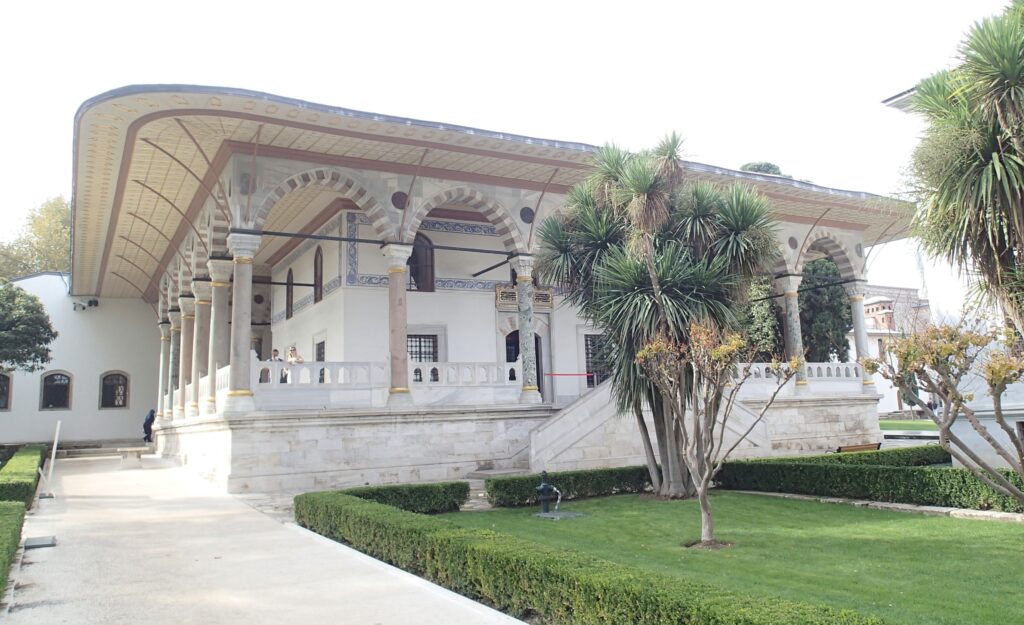
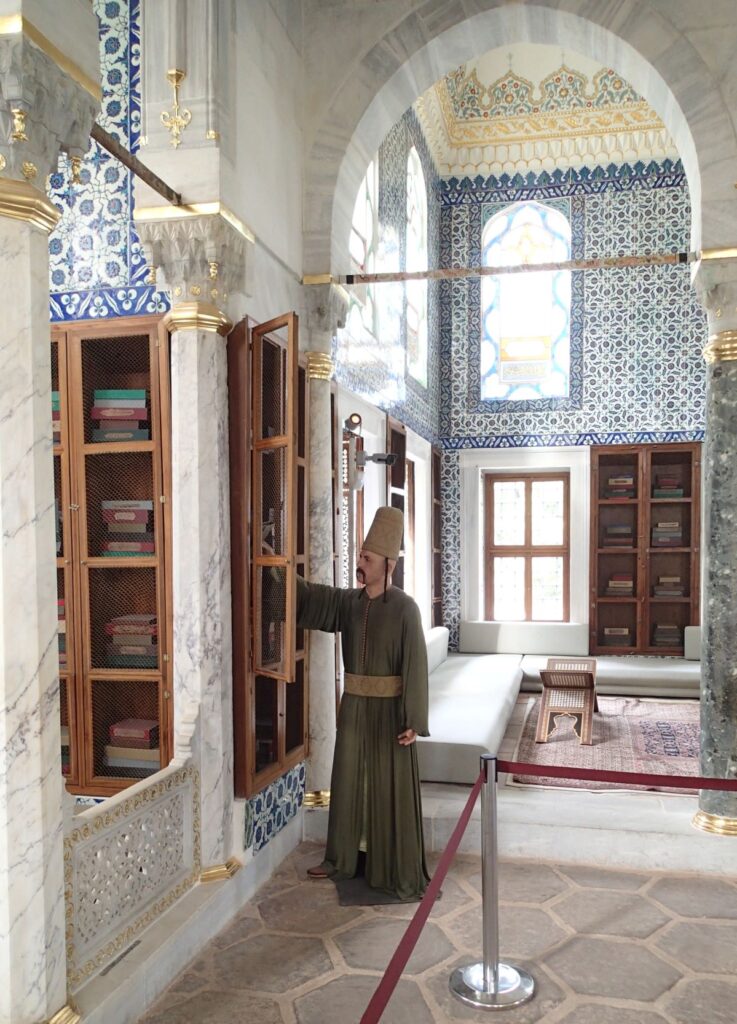
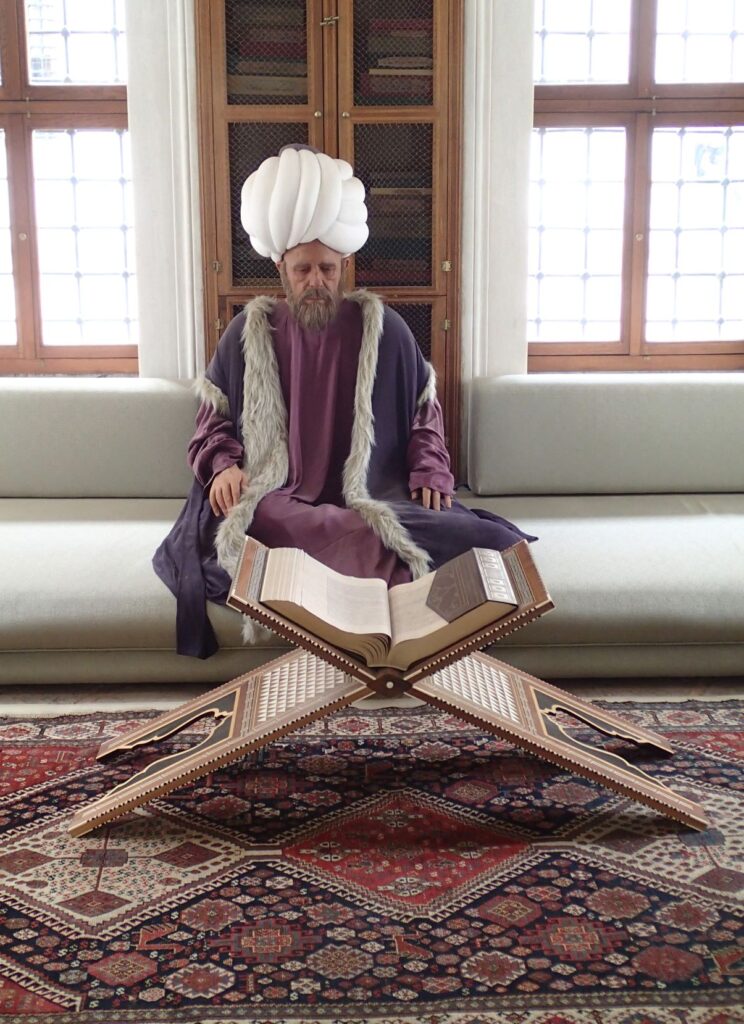
The Palace is situated on high ground, providing both views fit for a Sultan and strategic advantage.

Interestingly, the Turkish word ‘kiosk’ found its way into the English language, and is often used to describe a beachside store where sunburnt kids can buy ice-cream and a bag of salt and vinegar chips. In Turkish, a ‘kiosk’ is an open pavilion or summerhouse. This kiosk was built in 1639 to honour Sultan Murad IV, and was used, amongst other things, as a place where the Sultan stored his turbans. Considering the size of the Sultan’s head gear, it could house about three.

During its time as the seat of the Ottoman Empire, Topkapi Palace had a population of up to 4000. In order to provide food for the inhabitants, the Palace included a massive kitchen. Photography was not permitted in the kitchen building, but I can assure you it was impressive. The kitchen was built with long rectangular bricks, and features soaring domed ceilings and chimneys, and huge marble slabs used for food preparation. The Turkish people love a pickle, and the list of artisans tasked with looking after the Sultan’s diet included his own personal pickler.
Other displays within the Palace included an assortment of bladed weapons that made me wince, a collection of watches and clocks, and a holy building containing religious relics.
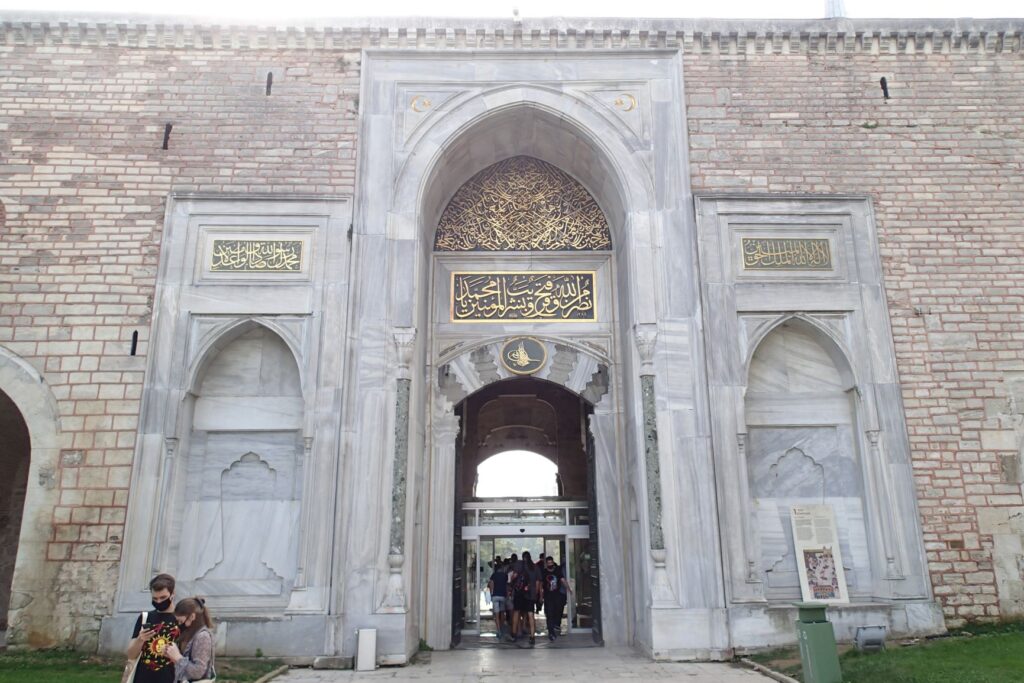
Behind the walls of the Old City, the Topkapi Palace provides a tranquil escape from the bustle and noise of modern Istanbul. The imposing gates are portals; transporting the visitor back to the glory days of the Ottoman Empire, where the Sultan ruled a mighty realm from this imposing seat of power.
For the Topkapi Palace website click here
If you enjoyed this post, you might also like Old Bodrum, Wildlife in Canakkale
Leave a Reply